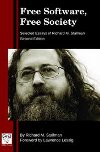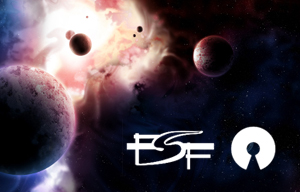Welcome to ETEC 647C at University of Hawaii-Manoa! This course is about the free and open-source software (F/OSS) movement and how educators can leverage it to their advantage. The first lesson will provide an introduction to the topic.
This lesson consists of two parts:
- a synchronous meeting that kicks off our semester with discussions and a presentation; and
- subsequent readings and activity on your own.
In it, we’ll dispel some myths and misunderstandings about the word “free” in this context, and start becoming familiar with the people, organizations, and history behind the software. We will also take a closer look at the roots of Free Software, and the Open-Source response to it.


The lesson addresses these topics:
- What is Free Software?
- What is Open Source Software?
- F/OSS and Proprietary Counterparts
- History of Free and Open Source Software
- The Free Software Foundation (FSF) and Open-Source Initiative (OSI)
First Week Preparation
- Open-Source for absolute beginners
- Free and Open-Source Software (wikipedia)
- List the 5 software titles that you use most often
Advanced Organizer
During the lesson, look for answers to the following questions. NOTE: consider copying and pasting these questions into your notes to reference while you read and review content
- Who defined the term “free software”?
- Who defined the term “open-source”?
- What determines if software is free, open-source, or both?
- What are some F/OSS alternatives to software you currently use?
- If F/OSS costs nothing to obtain and use, why doesn’t everyone use it?
- What was Richard Stallman resisting when he started the Free Software Foundation?
- Why was the term “Open Source” deemed necessary?
- How does the Open Source definition differ from the Free Software definition?
Synchronous Meeting
Blackboard Collaborate Web Conference (Required)
- Monday, 8/26/13
- 6:00PM HST
Please join the web conference 15 minutes early (5:45PM) to re-test your microphone and headset. The first part of class will be devoted to a Collaborate orientation, followed by introducing ourselves, holding discussions, viewing a presentation, participating in a group activity, and reviewing the syllabus and upcoming assignments.
Walk-through
To be able to fully participate in our next synchronous meeting you will need to complete all of the readings in this week’s walk-through.
1. Read the following sections of Producing Open Source Software:
- History (PDF pp. 3 – 9)
- The Rise of Proprietary Software and Free Software
- “Free” vs. “Open Source”
- The Situation Today. (PDF p. 9)
NOTE: You can choose to read the book online in HTML format, download the epub version to an ereader, or get the PDF version.
Let’s start with the history of the Free and Open-Source movements. Karl Fogel does a great job of summarizing this history in his book Producing Open Source Software. Note that Mr. Fogel’s text is focused on managing a successful open source project, or conversely – avoiding the failure of an open source project.
As you read, there were (and are) many sources of resistance to the rise of proprietary software, and as many motivations for resistance. Some consider F/OSS an ethical or moral choice, others a superior software development methodology, and yet others regard it as a good business strategy. As Fogel states, “Free software is a culture by choice.” Understanding the motivations for using or contributing to F/OSS software is a key to integrating it successfully as an educator. Fortunately, the benefits of adopting F/OSS don’t change based on your motivation for involvement.
2. Read the following section of Free Software, Free Society:
- Chapter 1 – (pp. 3-9) the Free Software definition
NOTE: You have the option to purchase the book or download a PDF copy.
As Fogel discussed, Richard Stallman, or RMS as he is frequently referred to, is a pivotal character in F/OSS culture and community. In chapter 1 of Free Software, Free Society, Stallman defines and discusses the Free Software definition. Note Stallman’s stance on the ethics of non-free software. He references “copyleft” in this chapter, which we will revisit in another lesson. Copyleft refers to the requirement that user freedoms be preserved in modified versions of software.
3. Read the Open Source Initiative’s Annotated Open Source definition:
In Fogel’s History chapter, we learned about the motivations behind the Open Source Initiative (OSI). Now let’s review the Open Source definition maintained by the OSI. How does this definition differ from the FSF’s Free Software definition? How is it that 10 criteria for Open Source and 4 criteria for Free Software generate nearly identical sets of conforming software?
4. Read Free Software Heroes:
Free Software Heroes is a great recap of some other major contributors to the Free Software movement. Note that your name could be on a similar list in the future… after all, Linus Torvalds was a graduate student when he began the now famous Linux kernel.
Assignment
FSF and OSI Webquest
This short webquest encourages you to explore the websites of the two organizations that have dedicated themselves to the advancement of Free Software and Open-Source Software. Open the following sites in two separate browser tabs so you can quickly jump between them:
In Laulima, see the Tests tool to enter your responses (unlimited responses allowed, you should get 100%).
Blog Bio and Post #1
- In our Laulima course site, go to the Blogs tool in the lefthand navigation.
- Use the “My blog settings” section to provide a brief introduction to you. Paste the URL to a photo of yourself in the space provided. You can use the same photo provided in our course roster if you wish. Write 3-5 paragraphs describing yourself. Who are you, and what are your professional goals? Why did you take this class?
If you don’t have a photo on the web already, you can upload your photo to the Resources section of your Laulima “My Workspace” site (Click the My Workspace Tab, click Resources, click the down-arrow next to “Add” in the My Workspace folder, choose “Upload Files”, Click “Browse”, use your file navigation to select a photo, click “Upload Files Now”. The file will appear in the list under “My Workspace”. Click the down-arrow next to “Actions” on the file’s line, select Edit Details. Check the option to make it publicly viewable! The URL for this file is in the “Web address” field – copy it and paste it as the photo URL in the blog profile.
- Add a blog entry. Write a few paragraphs describing your initial reactions to this class. What has interested you most so far? Has anything surprised you? What are you looking forward to?
Additional Material
- Richard Stallman explains Free Software (video, 2 minutes)
- Eric Raymond’s original call to the community to use “open source” terminology



